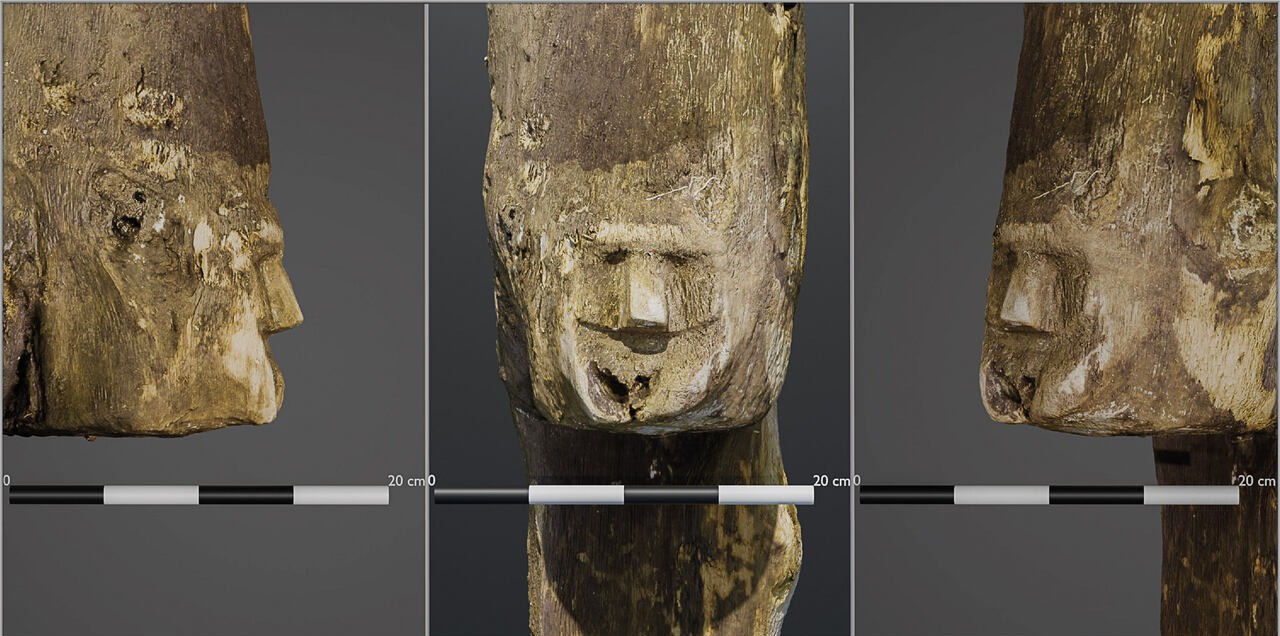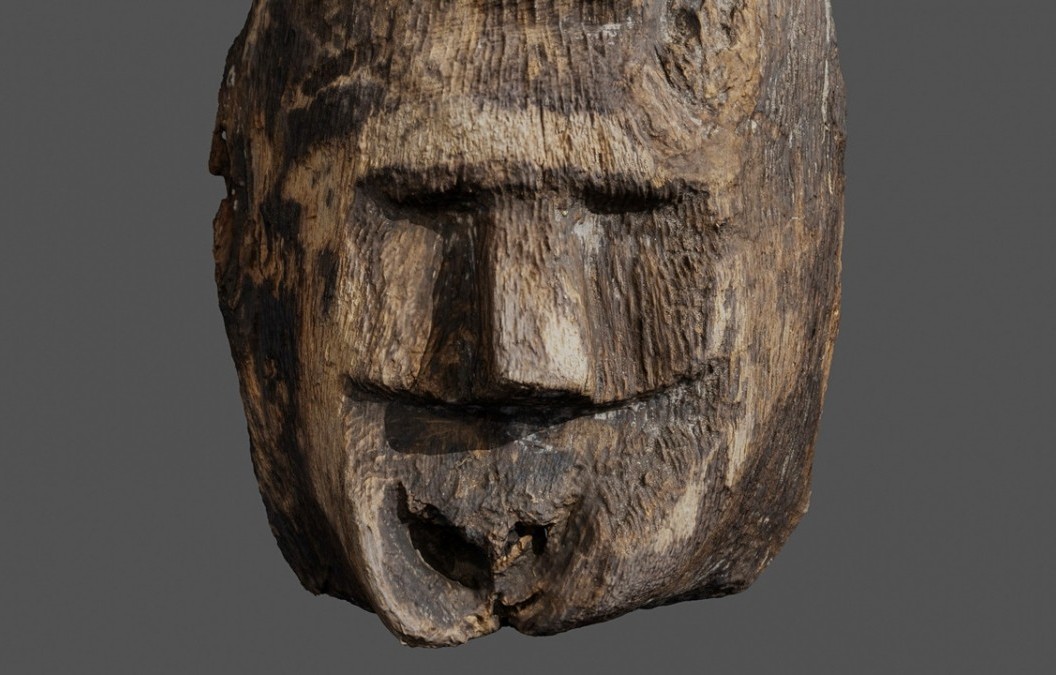Keep our news free from ads and paywalls by making a donation to support our work!

Notes from Poland is run by a small editorial team and is published by an independent, non-profit foundation that is funded through donations from our readers. We cannot do what we do without your support.
A well-preserved, 1,000-year-old wooden sculpture of a human face has been discovered at the bottom of a lake in Poland. The archaeologists behind the find say that it “opens a fascinating discussion on the spiritual life of early medieval Slavs”.
This is “one of the most valuable artefacts we have found over the last 40 years of underwater research” at the Lednica lake in west-central Poland, says Andrzej Pydyn, director of the department of underwater archaeology at Nicolaus Copernicus University in Toruń.
Research began there in 1982, making it the longest-running archaeological site in Poland. The area was an important area of activity for the Piasts, Poland’s first royal dynasty, which ruled from the 10th to the 14th century.
The latest find was part of a structural wooden beam that held together defensive ramparts. Only after bringing the object ashore did researchers notice that something had been carved into it – which turned out to be a 12-by-9-centimetre human face.
“When we cleaned it thoroughly, it turned out that a face was looking at us,” said Mateusz Popek, a member of the research team. “We never expected to discover something like this, even in our wildest dreams.”
Laboratory testing of the wood has led the researchers to estimate that it was cut around the year 967. The item will be shown to the public from next year as part of the permanent exhibition at the Museum of the Piasts in Lednica.

“The way the wood was worked and the expression of the face indicate that it was not a mere decoration,” wrote the team. It is possible that the representation had a symbolic meaning, representing a deity, protective spirit or hero guarding the inhabitants of the area.
They theorise that figurative anthropomorphic representations could have been more common in Slavic cultures than previously believed. However, such items have generally been lost to history as wood decomposes rapidly.
Other similar items have been found in the past near Saint Petersburg in Russia as well as at the Polish island of Wolin.
A fisherman has discovered a well-preserved medieval sword in the Vistula river in Warsaw, where water levels are currently at record lows following a heatwave https://t.co/3PW5iVwTTJ
— Notes from Poland 🇵🇱 (@notesfrompoland) July 4, 2025
The face from the Lednica lake most closely resembles the artefact from Wolin, further strengthening the assumption that it represents a local artistic and spiritual tradition, rather than the influence of Scandinavian or Ruthenian cultures.
Ostrów Lednicki, where the lake is located, occupies a special place in Polish history. Here, in the second half of the 10th century, Mieszko I, the first historically known ruler of Poland, built his stronghold that contained a palace with a chapel, where he was possibly baptised.

Notes from Poland is run by a small editorial team and published by an independent, non-profit foundation that is funded through donations from our readers. We cannot do what we do without your support.
Main image credit: Muzeum Pierwszych Piastów na Lednicy

Agata Pyka is a former assistant editor at Notes from Poland. She specialises in Central and Eastern European affairs, cybersecurity, and investigative reporting. She holds a master’s degree in political communication from the University of Amsterdam, and her work has appeared in Euractiv, the Balkan Investigative Reporting Network (BIRN), and The European Correspondent, among others.



















